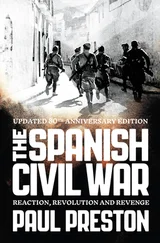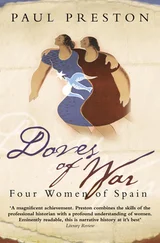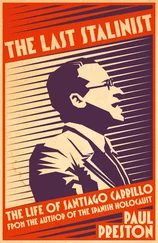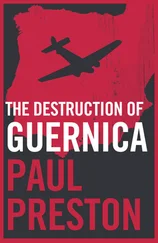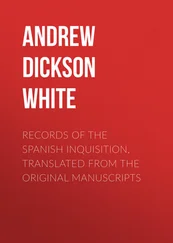Meanwhile, Mora-Figueroa’s column made daily expeditions to mop up after the troops who conquered the smaller towns to the north of the province, Ubrique, Alcalá del Valle and Setenil. Many local Republicans and trade unionists had fled to the sierra around Ubrique, fearing reprisals. However, when on 24 July a light aeroplane dropped leaflets announcing that anyone without blood on their hands had nothing to fear, many of them returned. Most of these trusting souls, including the Mayor, were shot in the course of the following weeks. A member of Izquierda Republicana, the Mayor owned a prosperous bakery and olive press. By providing cheap bread for the poor, he had earned the enmity of the local oligarchy. He was tortured and forced to hand over substantial sums of money before being shot. At least 149 people were executed in Ubrique. 33
In nearby Alcalá del Valle, the local Civil Guard had handed over its guns to a rapidly created Comité de Defensa. Weapons held by local rightists were confiscated and several of the men were imprisoned but none was physically harmed. The parish church was requisitioned as the Comité’s headquarters, its altar, statues and religious images destroyed. The town was briefly occupied on 25 August by a force of twenty Civil Guards and Manuel Mora-Figueroa’s Falangists. After it had been driven off, a group of anarchist militia arrived from Ronda in the neighbouring province of Málaga and began to loot the houses of local right-wingers until they were stopped by the Comité de Defensa. On 18 September, the town was finally reoccupied by rebel units including Mora-Figueroa’s column. The repression in Alcalá del Valle was sweeping, aiming to eradicate left-wing individuals, organizations and ideas. Knowing what the columns had done in nearby towns, many inhabitants of Alcalá del Valle had already fled. These included those who had held posts in Republican parties, trade unions or institutions. The victims were thus those who had stayed confident that, being guilty of no crimes, they had nothing to fear. There was no pretence of trials. Twenty-six men and four women were picked up off the street or from their houses, tortured and then shot. 34
While the various paramilitary forces purged the province of Cádiz, a similar process was taking place in Seville. There the right-wing victory was attributed by Gonzalo Queipo de Llano to his personal daring and brilliance. Within a year of the events, he claimed that he had captured the city against overwhelming odds with the help of only 130 soldiers and fifteen civilians. In a radio broadcast on 1 February 1938, he made an even wilder exaggeration, declaring that he had taken the city with fourteen or fifteen men. 35He claimed that he been opposed by a force of over 100,000 well-armed ‘communists’. In fact, the defeated workers had had between them only eighty rifles and little ammunition and were armed, if at all, with hunting shotguns, ancient pistols and knives. 36
Far from being an act of spontaneous heroism, the coup had been meticulously planned by a major of the General Staff stationed in Seville, José Cuesta Monereo, and was carried out by a force of four thousand men. The commander of the Seville Military Region, General José de Fernández Villa-Abrille, and his senior staff were aware of what was being hatched. They did nothing to impede the plot, despite the pleas of the Civil Governor, José María Varela Rendueles. 37Nevertheless, Queipo had them arrested and tried for military rebellion. The majority of the Seville garrison were involved in the coup, including units of artillery, cavalry, communications, transport and the Civil Guard. This is clear even from the lists included in the hymn of praise to Queipo composed by the journalist Enrique Vila. 38After artillery bombardment, this large force seized the telephone exchange, the town hall and the Civil Governor’s headquarters, blocked the main access routes into the centre and then applied indiscriminate terror. 39
The subsequent crushing of working-class resistance was undertaken by Major Antonio Castejón Espinosa. According to Castejón himself, with fifty Legionarios, fifty Carlist Requetés, fifty Falangists and another fifty Civil Guards, they immediately began the bloody suppression of the workers’ districts of Triana, La Macarena, San Julián and San Marcos. Castejón’s artillery was organized by Captain Luis Alarcón de la Lastra, the CEDA deputy and landowner from Carmona, who had immediately placed himself under the orders of Queipo. 40The Falangists came mainly from the Círculo de Labradores, the rich landowners’ club. Civilian participation in the rising was organized by prominent members of the Círculo like Ramón de Carranza, Pedro Parias González and the bullfighter Pepe el Algabeño (José García Carranza). Queipo de Llano rewarded them by making Carranza Mayor and Parias Civil Governor of Seville. Pepe el Algabeño, who had been the target of an assassination attempt by anarchists in Málaga in March 1934, headed a group of bullfighters who placed themselves at the disposal of Queipo de Llano. 41On the morning of 19 July, armed gangs led by Carranza imposed what he called ‘brutal punishment’ on working-class districts around the city. 42
Despite artillery bombardment, the working-class districts resisted doggedly. Finally, Queipo’s forces, using women and children as human shields, were able to enter and begin the repression in earnest. Women and children, as well as their menfolk, were were put to the sword. After the subjugation of Triana, the new Mayor Carranza strode through the streets with a megaphone ordering that all pro-Republican and anti-fascist graffiti be cleaned from the walls. He set a ten-minute deadline, after which the residents of any house whose walls carried slogans would be shot. With fathers, husbands, brothers and sons dead or dying in the streets around them, the surviving men, women and children began frantically scrubbing at the walls while the victorious rebels gloated. 43For his final attack on La Macarena, on 22 July, Queipo used aircraft to bomb and strafe the district. He published a warning in the press demanding that weapons be thrown into the street and windows and doors be covered in white sheets to ‘avoid the damage that could be caused by air attacks and the forces of the Army’. 44
On 16 August, the bodies of two Falangists were found in Triana. In reprisal, seventy men from the surrounding streets were arrested at random. They were shot in the cemetery without any form of trial two days later. 45When the actor Edmundo Barbero reached Seville in August, he would find the city (and many of its inhabitants) entirely plastered in Falangist symbols. Triana, La Macarena, San Julián and San Marcos were full of the rubble of houses destroyed by the artillery barrages. Barbero was appalled by the terror-stricken faces and the fact that all the women wore black, despite Queipo’s prohibition of public mourning, incessantly and threateningly repeated in the press and on the radio. Elsewhere, in the pueblos, Falangist patrols ensured that no houses carried emblems of mourning and that laments of grief could not be heard. 46
After the initial slaughter, a more systematic repression began. On 23 July, Queipo de Llano issued another edict which stated that any strike leaders caught would be shot along with an equal number of strikers chosen at the discretion of the military authorities. Anyone who disobeyed his edicts was to be shot without trial. The following day, Queipo issued his sixth edict, which stated that ‘on discovering acts of cruelty against individuals in any town or village, the leaders of the Marxist or Communist organizations that exist there will be shot. In the event of them not being found, an equal number of their members, arbitrarily selected, will be shot without this prejudicing the sentences that will be passed against the guilty ones.’ 47This edict was used to justify the execution of large numbers of men, women and children who were innocent of any ‘acts of cruelty’.
Читать дальше

